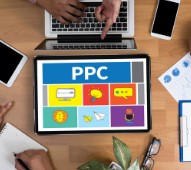The digital age has brought about new ways of reaching consumers, and one of the most notable changes has been the rise of influencer marketing. Today, influencers – individuals with large, dedicated followings on social media platforms like Instagram, YouTube, TikTok, and Twitter – are shaping how brands engage with audiences. This shift has introduced new strategies, challenges, and opportunities for marketers. In this article, we explore the evolution of advertising in the age of influencers, the factors contributing to their rise, and the impact on both brands and consumers.
The Rise of Influencer Marketing
Before delving into the specifics, it’s important to understand the forces driving the rise of influencers. The term “influencer” refers to individuals who have the ability to impact the purchasing decisions of others due to their credibility, reach, and authority in a particular niche. In the past, advertising was largely dominated by traditional media such as TV, radio, and print. However, with the advent of social media, brands have had to adapt to the new digital environment.
Social media platforms such as Facebook, Twitter, and Instagram revolutionized how individuals interacted with brands. Traditional advertising models began to lose their effectiveness as audiences grew more selective about the content they consumed. People no longer trusted the one-way communication models of television commercials or banner ads. Instead, they sought authentic, relatable content from individuals they trusted.
This shift gave rise to influencers – individuals who, through their authentic connection with their followers, were able to promote products in ways that felt more personal and engaging than traditional advertisements. Influencer marketing quickly became a natural extension of social media trends. As platforms like Instagram and YouTube gained popularity, people began to monetize their online personas by endorsing products and services.
The Power of Authenticity
One of the primary reasons for the success of influencer marketing is the perceived authenticity influencers bring to their endorsements. Consumers, particularly younger generations like millennials and Gen Z, are highly skeptical of traditional advertising methods. In fact, studies have shown that consumers tend to trust recommendations from influencers more than those from brands directly.
Unlike celebrities in traditional advertising who often feel distant and inaccessible, influencers are seen as “real” people with whom audiences can relate. They share glimpses of their personal lives, giving followers a sense of intimacy and connection. This relatability allows influencers to build trust with their audience, making their product recommendations feel less like a sales pitch and more like a friendly suggestion.
For example, an influencer may post about a new skincare product they’ve been using, not in a way that feels forced or overly scripted, but as part of their everyday routine. This sense of authenticity resonates with followers, who may then be more inclined to try the product themselves.
The Different Types of Influencers
Not all influencers are created equal, and the landscape is diverse. Influencers can be broadly categorized into several types based on their reach and niche. Understanding these categories is crucial for brands to select the right influencers for their campaigns.
- Mega-Influencers: These individuals have millions of followers, often ranging from 1 to 10 million. Mega-influencers are typically celebrities, athletes, or public figures who have already established a high level of fame. Brands may work with mega-influencers for large-scale campaigns, but the cost is usually substantial. While their reach is vast, the connection they have with their audience may be less personal, making it more difficult to create the sense of authenticity that is so crucial in influencer marketing.
- Macro-Influencers: Macro-influencers have followers in the range of hundreds of thousands to a few million. These influencers often have a more specific niche or area of expertise compared to mega-influencers. While they may not have the same level of celebrity status, they still have substantial influence over their followers. Brands targeting a specific audience within a broader demographic might choose macro-influencers to create more targeted campaigns.
- Micro-Influencers: Micro-influencers are individuals with smaller followings, typically between 10,000 to 100,000 followers. Despite their smaller audience, micro-influencers often boast higher engagement rates and deeper connections with their followers. This makes them an attractive option for brands seeking more cost-effective campaigns that still maintain a high degree of authenticity.
- Nano-Influencers: Nano-influencers are at the bottom of the influencer hierarchy, with followings of less than 10,000. While their reach is limited, nano-influencers have highly engaged communities. Brands that want to engage with niche markets or local communities may find nano-influencers to be a powerful tool in their marketing arsenal.
The Benefits of Influencer Marketing
The growth of influencer marketing has brought about several key benefits for brands and marketers. These advantages explain why influencer marketing has become one of the most popular forms of advertising in the digital age.
- Targeted Reach: Influencers often cater to specific demographics, whether it’s age, gender, location, or interests. By partnering with influencers who align with their target market, brands can ensure their message reaches the right audience. For example, a beauty brand targeting young women may choose an influencer whose followers consist predominantly of this demographic.
- Increased Engagement: Unlike traditional ads, influencer marketing fosters engagement. Influencers encourage their followers to comment, share, and interact with their content. This creates a sense of community and allows brands to spark conversations about their products. Higher engagement rates often translate into greater brand awareness and consumer loyalty.
- Cost-Effectiveness: Depending on the type of influencer and campaign goals, influencer marketing can be more affordable than traditional advertising methods. For example, a micro-influencer may offer a more budget-friendly alternative to celebrity endorsements, while still providing a high level of engagement and trust.
- Enhanced Creativity: Influencers are creative individuals who understand the nuances of their platforms and audiences. They know what type of content resonates with their followers and can craft authentic, engaging campaigns that feel organic. Brands that allow influencers to have creative freedom often see better results than those that impose rigid guidelines.
The Challenges of Influencer Marketing
While influencer marketing has its benefits, it also presents several challenges that brands must navigate carefully.
- Maintaining Authenticity: One of the biggest risks in influencer marketing is the potential for inauthentic endorsements. As influencer marketing becomes more mainstream, some influencers may begin to promote products they don’t genuinely use or support. This can erode the trust that followers have in the influencer, and ultimately, damage the effectiveness of the campaign. Brands must carefully vet influencers to ensure they align with their values and are genuinely passionate about the products they promote.
- Measurement of ROI: Measuring the success of influencer campaigns can be difficult. Unlike traditional forms of advertising where metrics such as TV ratings or click-through rates provide clear indicators of performance, the impact of influencer marketing can be harder to quantify. Brands need to invest in tracking tools and establish clear KPIs (key performance indicators) to assess the success of their campaigns accurately.
- Regulatory Issues: As influencer marketing grows in popularity, so too does scrutiny from regulatory bodies. The Federal Trade Commission (FTC) in the U.S. has set guidelines for influencer disclosures, requiring influencers to clearly indicate when their content is sponsored. Brands and influencers must be vigilant in ensuring compliance with these rules to avoid legal repercussions.
- Choosing the Right Influencers: With millions of influencers out there, it can be difficult for brands to select the right ones for their campaigns. Choosing an influencer who aligns with the brand’s values, voice, and target audience is crucial. Brands must also consider factors like engagement rates, follower demographics, and authenticity when making their decision.
The Future of Influencer Marketing
The future of influencer marketing looks bright, with continued growth expected in the coming years. Several trends are shaping the future of the industry:
- Influencer-Brand Partnerships Will Evolve: As the influencer space matures, brands will move beyond one-off collaborations and begin developing long-term partnerships with influencers. These ongoing relationships will foster deeper connections between influencers and their audiences, leading to more effective campaigns.
- Video Content Will Dominate: Video content is rapidly becoming the most engaging format on social media. Platforms like TikTok and Instagram Reels have popularized short-form video content, and influencers are increasingly leveraging these formats to engage their followers. As video continues to dominate, brands will need to adapt their campaigns to take advantage of this trend.
- Micro and Nano-Influencers Will Grow in Popularity: While mega-influencers will always have a place in advertising, there will be a shift toward micro and nano-influencers due to their higher engagement rates and more authentic connections with their audiences. Brands will increasingly focus on niche markets and target smaller, highly engaged communities.
- Artificial Intelligence and Data Analytics: With the rise of big data and AI, influencer marketing will become more data-driven. Brands will use AI-powered tools to better identify influencers, measure campaign performance, and predict future trends.
Advertising in the age of influencers has revolutionized how brands connect with consumers. Through authenticity, relatability, and targeted reach, influencers have become essential partners for marketers looking to engage their audiences in meaningful ways. While the industry faces challenges, such as maintaining authenticity and measuring ROI, the benefits are undeniable. As influencer marketing continues to evolve, brands that embrace new trends and adapt their strategies will continue to thrive in this dynamic landscape.




